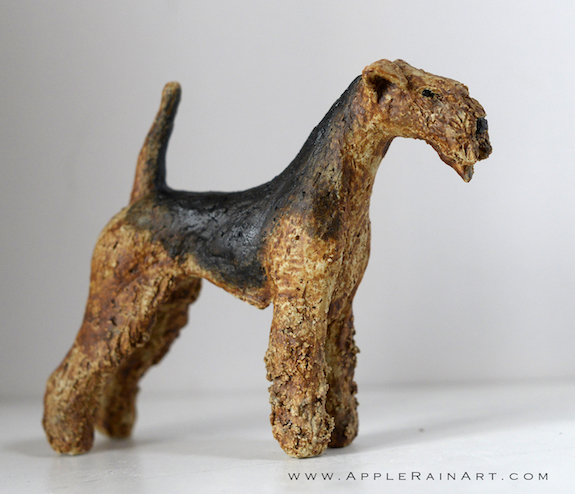
In another post, we talked about the “terrier front,” and what it is. In this post, we narrow things down a bit to one breed in particular, the Lakeland Terrier.
Some people think a terrier front refers to straight angulation, but in fact, a lack of good reach in the front is a fault in this breed. Straightness in a terrier front refers to the dog’s forelegs, not its layback, angulation, or even a short-stride. A sound Lakeland Terrier has well angulated shoulders, and indeed, the breed standard helps us understand this by imagining a line drawn from the top of the shoulder blade downwards. It should pass through the elbow.
The Lakeland’s shoulder blade is long in proportion to its upper arm (though short as compared to non-terrier breeds), and this allows for reasonable angulation while maintaining the more upright “terrier front” that’s so often misunderstood by those just learning about the breed. This relatively shortened humerus allows the entire dog to get into a hole, not just its head, and it does this by squeezing one shoulder through the hole at a time. A shorter upper arm also enables the dog to dig feverishly, but clear the deepest part of his chest. Without this type of structure, a Lakeland would be unable to advance its body into tight quarters, and that would render the dog useless to its working farm owner.
This breed is narrow in the front (but never pinched). This is due to an upper arm that’s curved inward toward the midline, and that brings the front legs closer together resulting in the narrower front preferred on a long-legged terrier. Whether standing still or gaiting, the shoulder blades are knit close together, and the elbows held close to the body. Again, we should imagine a pretend plumb-line dropped straight from behind the point of the top of shoulder. It should fall just behind the elbow.
Image: Lakeland Terrier ceramic sculpture by Barbara Fraile/applerainart. The artist does custom sculptures and portraits and you can see more of her work (and contact her) here.
